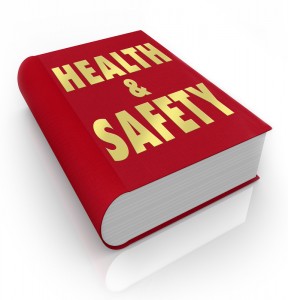A Health and Safety Business case.
 Small and medium sized businesses are the backbone of Britain (and Europe’s) economy. According to a recent report by the European Agency for Safety and Health at Work (EU-OSHA), 67% of all jobs in the EU are provided by SMEs.
Small and medium sized businesses are the backbone of Britain (and Europe’s) economy. According to a recent report by the European Agency for Safety and Health at Work (EU-OSHA), 67% of all jobs in the EU are provided by SMEs.
However with smaller budgets most business owners need to properly understand the financial implications of health and safety legislation. Although they recognise the importance of keeping employees safe and well, few properly realise the full benefits of doing so. This is compounded by the fact that the lean, flexible management structure favoured by SMEs tends to place less emphasis on occupational health and safety than other factors.
Looking after staff
The EU-OSHA report makes for sobering reading. SME employees are at far greater risk of workplace injury or death; 82 per cent of occupational injuries and 90 per cent of workplace fatalities take place in small businesses.
But rather than trying to frighten SME owners into making changes, the EU-OSHA report – The Business Case for Safety and Health – only takes account of the financial business case for applying health and safety best practices. By combining the findings of 13 existing health and safety case studies, the EU-OSHA unearthed some interesting facts.
Major financial improvements
The case studies looked at the performance of 13 companies over the course of five years with a view to assessing the financial impact of health and safety programmes. It was discovered that 11 of the 13 companies analysed were profitable at the end of the five year study period, suggesting that the “financial burden” of occupational safety is being overstated.
In the majority of cases analysed, the cost of investing in improved health and safety provisions was recouped in less than two years.
Diverse range of benefits
As well as improving conditions for staff, each case study uncovered additional benefits. The following benefits are just some sampled from the case studies:
- Improved employee productivity and output through the provision of more ergonomic PPE.
- A 20% reduction in accidents and the costs associated with each.
- A reduction in sick leave and lost productivity caused by back pain.
- A 30% rise in productivity by improving working conditions that had contributed to employee illness and sick leave.
In almost all cases, improved occupational health and safety programmes boosted productivity, increasing profitability in the process. The study mentions additional benefits, like avoiding fines and costs associated with prosecution for breaching regulations; unfortunately it does not quantify how much this could cost SMEs.
The report also includes some very useful suggestions on how to calculate the return on investment and business case for your own company. You can download a copy of The business case for safety and health at work report for free.
Ultimately the EU-OSHA report concludes “Safety and health at work is everyone’s concern. It’s good for you. It’s good for business.”
Has your business ever tried to establish the business case for investing in health and safety improvements? What did you discover?

A chartered (fellow) safety and risk management practitioner with 20+ years of experience. David provides a healthy dose of how-to articles, advice and guidance to make compliance easier for construction professionals, Architects and the built environment. Get social with David on Twitter and Linkedin.




One Comment
Good article David . I will follow your post. Thank you